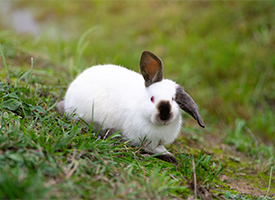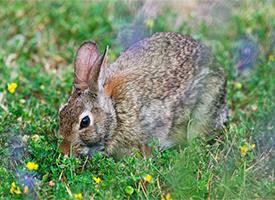European rabbits are a non-native invasive species originating from Europe and North Africa. They were introduced to BC by early settlers for their fur and as a food source. Over time, they became domesticated and primarily kept as pets. Their diet consists of tender greens and leafy shrubs, which can reduce food sources available for native species and hinder forest regeneration. Additionally, European rabbits compete with many native species for habitat and shelter and their burrowing may cause extensive soil erosion.
Their colouring and size may vary, as they are a descendants from domestic rabbits commonly found in pet stores. They are typically between 30-40 cm, with fur in various colours, including white, grey, brown, black or a combination. They also have shorter ears than hares.
For more information, please visit: European Rabbit Alert Species and European rabbit - ISCBC


